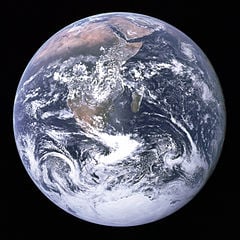I have heard at least once if not more times that July 2018 is California’s hottest month ever recorded. 124 years ago, it should be noted, is when such temperature-data recordkeeping first began.
On Saturday, a friend in Bakersfield texted that the Air Quality Index there had reached an unhealthy (for everyone) 151. Ozone was the pollutant of note. This was amplified when I saw on CBS’s Sunday Morning during the news rundown, a map capsulizing the nation’s weather. One word summed up California’s central interior: Haze.
Haze, a word that could also be used to describe how some folks feel on matters of climate disruption, global warming, climate change, in other words, they may agree such is real but are unclear as to what the causes are. Like I said, haze.
Then you have the crowd that thinks CC/GW/CD is a hoax. I’m a member of the other camp that CC/GW/CD is a fact and fossil-fuel burning is to blame.
Now there are two types of television viewing. One is more informational, educational; the other more for entertainment value.
On that note, I’ve lately been doing a lot of the former and most of that on show-uninterrupted PBS (Public Broadcasting System). Truth be told, much of what show content I’ve seen has been distressing, bleak, and all pretty much in August.
Originally broadcast in November 2015, but still very much relevant today, is a NOVA feature entitled: “Making North America,” and in particular, “Making North America Human,” episode 3.
The third in the series opens by explaining that as recently as 13,000 years ago a lot of North America was covered in a layer of ice 200 feet thick, if I have my information right. That’s at the tail end of, again, if I recall correctly, the last ice age.
At presentation’s end, viewers are left with scenes of Los Angeles, its traffic, oil derricks otherwise known as pump jacks, and plumes of pollution marring, discoloring the skies, most likely with a reference to a changing world climate accompanying these visuals.
In the lineup next were a series of America Reframed programs highlighting Native American life in Alaska, the regular doings and goings on including the day-to-day struggles that are part and parcel of it. Part of that had to do with the effects of a warming planet.
In one episode covering the town of Barrow on the Arctic Sea, an instructor at Barrow High School lead student discussion centered on Native Alaskan lifestyle and how CC/GW was potentially affecting that. The feeling was strong such was influencing livelihoods related to hunting and whaling, practices that residents living there depend on to such a large extent to support life. Such change was making whaling at certain times of the year an extremely risky proposition. What I’m referring to specifically are drifting and thinning ice sheets. Bottom line: The landscape was undergoing change and it wasn’t for the better, I can tell you that.
This was followed in viewing order by a show called “Changing Seas” and, as it happens, quite a coincidence.
However, this time the location of focus is the southeast state of Florida, and specifically, the southern portion. It was a problem of a different kind that was grabbing attention there: algal infiltration in major Sunshine State bodies of water and sensitive habitat. Sewage, residential, agricultural and storm-water runoff are all having an impact.
What used to be the natural course of events is that when Lake Okeechobee overflowed its banks, water would flow to the Everglades region. But due to flood control measures that were instituted all that changed.
Such overflows were intentionally directed east to the Atlantic and west to the Gulf which resulted in everglades damage. But, it wasn’t just this. Lake Okeechobee, because of the aforementioned runoff from residences, farms and whatnot, heightened amounts of nitrogen and phosphorous were adding to normal levels of such causing the algal infiltration, algal creation. So that’s what this area is dealing with. Work is being done to correct the problem but it is extremely slow going. And, this work is decades in the making.
Fortunately, a solution has been identified, but without political will and huge amounts of capital investment to see the restoration effort and proper channeling of water through, it may be decades more before this work bears fruit.
In the meantime, tourism activity (which is building) and population rise are compounding matters.
And, speaking of expanding population, by 2050, the world over, numbers are expected to reach 9 billion. So, the question becomes how to provide or produce enough food to feed the world’s people.
In the last program dealing with urban farming, community supported agriculture may provide an answer. In an on-screen visual, it was pointed out that each day, an estimated 3,000 farmland acres are given up to development. Meanwhile, based on information presented in a recent American Farmland Trust press release, in doing the math, it can be inferred that roughly 4,000 American farmland acres are given up to development each and every day. More broadly or globally applied, what this means is that food to feed the world, with more mouths to feed, has to be done on less land.
Urban farming provides a viable solution and such provides many with the opportunity to purchase healthy foods where that opportunity might not otherwise have existed. So, it’s a win-win.

And, the planet we inhabit isn’t missing a beat. Or one could look at the situation in another way: Earth is sending an SOS (a distress call) and one that could not be clearer.
Though some may write this off as an alarmist overreach and over reaction, I, for one, don’t believe that for a minute.
Image above: NASA
This post was last revised on May 23, 2020 @ 2:22 p.m. Pacific Daylight Time.
– Alan Kandel